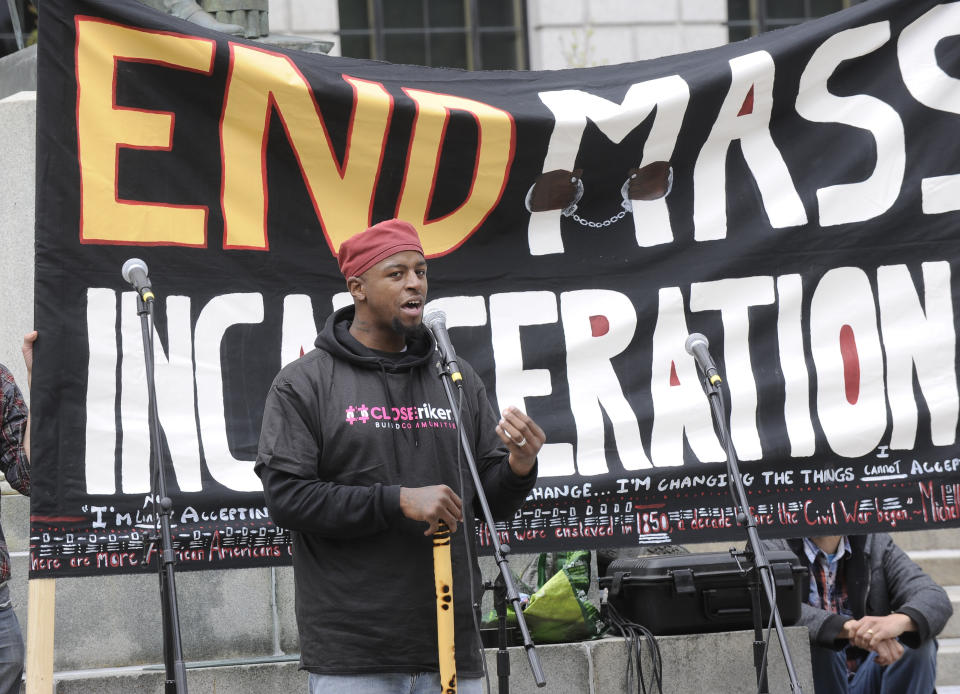Hiring ex-convicts could help address America's labor market woes
The stigma of criminal records along with the disruption of skills development and education during incarceration is preventing a large group of working-age Americans from getting jobs. This comes as more and more businesses struggle to look for qualified labor.
The Center for Economic and Policy Research (CEPR) estimates there were between 14 million and 15.8 million working-age people with felony convictions in 2014.
Discrimination against the group reduced U.S. national employment by as many as 1.9 million workers in 2014, according to Cherrie Bucknor and Alan Barber at CEPR. This corresponds to roughly a full percentage-point reduction in the overall employment rate that year. (The employment-population ratio in 2014 was 59%). It also translates to a lost economic opportunity of up to $87 billion in GDP.
It’s important to note that the CEPR studied the impact of felony convictions but excluded white-collar felony convictions and misdemeanors. That’s because violent felony convictions have a much more direct impact on employment prospects. (Approximately 70 million, or one in four US adults, had some sort of arrest or conviction record, according to the National Employment Law Project, as of 2014.)

The institutional barrier of criminal records is the biggest overlooked factor contributing to the declining labor force participation rate (LFPR) in the US, according to Nicholas Eberstadt of the American Enterprise Institute.
The LFPR, or the percentage of working-age people who are either working or actively looking for work, currently stands at just under 63%. This is significantly below the 67% level reached 20 years ago and the second lowest among OECD countries. This low participation rate at least partially explains why the unemployment rate is at a low 4.4%.
Job prospects are starting to improve for this group
Barber said that he is starting to see more signs of an increase in employment for this population in industries like construction, drilling and trucking.
“There’s still a considerable amount of slack in most of those industries,” Barber said. “That’s why we’re starting to see an uptick in hiring patterns there, including sidelined groups.”
This recent uptick could impact monetary policy, he said, as the Federal Reserve considers the path of interest rates. Why? Because if this group decides to come off the sidelines and enter the labor force, then we could suddenly see the unemployment rate rise.
“If those who had given up looking for jobs are finally getting opportunities, the Federal Reserve may hold back on raising rates as quickly,” Barber said.
Typically, former prisoners fill lower-wage, blue-collar jobs, according to Barber. He added that areas like construction, drilling, and trucking will be filled by this population. Meanwhile, industries that require one-on-one contact with an employee, like healthcare, are unlikely to fill roles with ex-convicts, even though the number of open positions is growing quickly.
“If we have enough demand there will be availability for jobs for those that aren’t in the labor force, including those that have criminal justice problems,” Eberstadt said.

A record is more of a hindrance than age, ethnicity, or education level
“Today, the United States is home to a vast and largely invisible army of felons and ex-prisoners, overwhelmingly men of prime working age,” he said. “These ex-convicts fare very poorly in the labor market — and their diminished prospects constitute the key missing piece to the puzzle of understanding the collapse of work for men in modern America.”
According to the National Longitudinal Survey of Youth (NLS), regardless of a man’s age, ethnicity or educational attainment, he is much more likely to be out of the workforce if he has served time in prison than if he only has an arrest record — and also much more likely to be out of the labor force if he has an arrest record than if he has never been in trouble with the law.
As you can see in the chart below, men with at least one arrest (blue bar) are more likely to be out of the labor force than those with no arrests. The discrepancy is much more significant between those who have been incarcerated (orange bar) than those who haven’t.

And while not the only factor, these studies have shown that the stigma of having a criminal record has contributed to the rising number of people bowing out of the labor force, particularly in the last decade.
The conventional narrative says that most of the declining participation rate comes from demand factors—like a decline in manufacturing, technological changes and outsourcing— and demographic shifts like an aging population. But, acccording to Eberstadt, that narrative under-emphasizes the role of institutional barriers.
Nicole Sinclair is markets correspondent at Yahoo Finance.
Please also see:
Bob Iger tells us about Disney’s most ambitious project in years
Cooperman: There are 4 things to worry about when you look at the stock market
Warren: Senators are spending 110% of their time working through what Trump has done
Senator Warren: The CFPB reminds us that government can actually work


